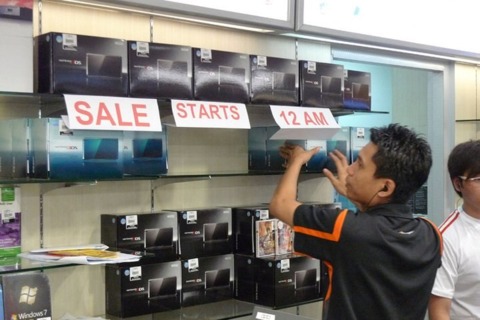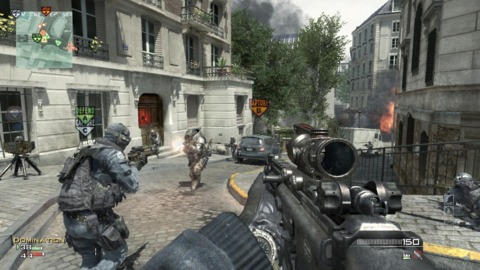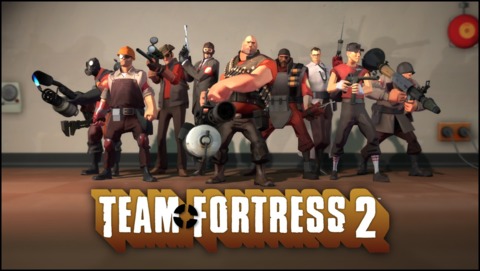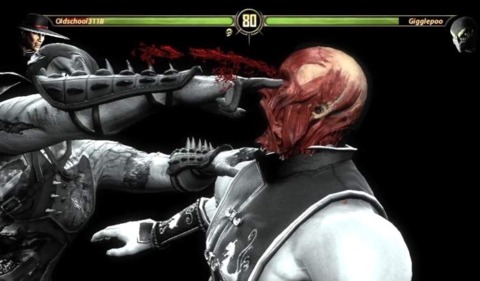2011: The Year in Review
It's been a busy year, but we'll help bring you up to speed with recaps of five of the biggest ongoing stories in the industry.

It's December, and that means it's time to take stock of the year that was before setting out on the campaign still to come. While GameSpot's Best of 2011 awards will handle the requisite retrospection for the year's biggest and best releases, they don't take into account the stories surrounding the games and the trends and topics that dominated conversations and shaped the industry. So as a companion piece to our annual honors, the GameSpot News team has put together some high-level recaps of five of the biggest ongoing themes in the gaming world this year.
Assassin's Creed Shadows Hands-On Preview DOOM: The Dark Ages | Gameplay Sizzle Trailer NINJA GAIDEN 2 Black Official Launch Trailer NINJA GAIDEN 4 Official Announce Trailer Assassin's Creed Shadows: Story Trailer Assassin's Creed Animus Hub - Explanatory Overview Trailer Black Ops 6 - Season 02 Cinematic Trailer Pokémon TCG Pocket: Space-Time Smackdown | Coming Soon! FINAL FANTASY VII REBIRTH - PC Launch Trailer over the hill - Announcement Trailer PAYDAY 3: Don't Be a Hero Trailer Vampires: Bloodlord Rising | Dragos Gameplay Trailer
Please enter your date of birth to view this video
By clicking 'enter', you agree to GameSpot's
Terms of Use and Privacy Policy
Where's the new hardware?
Even though 2011 has seen just a single new system launch (so far), it has still been a huge year for hardware news. Nintendo rang in the year by announcing a $250 price point and March 27 US release date for the 3DS, its anticipated successor to the best-selling system of all time, the DS. The system jumped out to a promising start, with Nintendo saying its day-one sales were the highest of any handheld in the company's history. However, it soon became apparent the glasses-free 3D portable was not living up to expectations, as Nintendo addressed the surplus of systems on shelves, stepped up its marketing for the system, and acknowledged the launch lineup was "lacking."
Meanwhile, Sony was slowly taking the wraps off the successor to its own handheld, the PSP. In a late January press event in Tokyo, Sony announced the "Next Generation Portable," a tentatively titled handheld that bore more than a little resemblance to the PSP, with the biggest apparent difference being the presence of twin analog sticks on the front of the unit. Less visible improvements included 3G support, a touch screen on the front and touchpad on the back, front- and rear-facing cameras, and tilt sensitivity. At the Electronic Entertainment Expo, Sony would rechristen the machine as the PlayStation Vita.
The PS Vita wasn't the only new hardware on display at E3, as Nintendo used the show as its coming out party for the Wii U. Beyond the company's entry into high-definition gaming, the Wii U was positioned as another entry in the company's line of interface innovations like the DS touch screen and the motion-sensing Wii Remote. The big draw of the Wii U is its tablet controller, which includes a touch screen, tilt-sensitivity, and enough sticks and buttons to provide a traditional gaming experience for games that demand it. The system drew plenty of support from third-party publishers like Electronic Arts and Ubisoft, but a tepid reaction from investors sent Nintendo shares sinking.
Nintendo's troubles came to a head in late July when it dramatically dropped its full-year profit forecasts by more than $1 billion and announced the price of the 3DS--released less than six months prior--was coming down to $170 from its original $250. The price cut worked in sparking 3DS sales, and by Black Friday weekend, the handheld had surpassed the first-year sales total of the original DS.
While Nintendo grappled with its 3DS woes and took the wraps off the Wii U, Microsoft and Sony were largely mum about their next-generation consoles. That didn't stop rumors from popping up as the year went along, with the PlayStation 4 and Xbox 720 (or Xbox Loop, or Xbox Next, or Project Ten) set for release in 2012. Or maybe 2013. But it could be 2014. Unfortunately, the biggest confirmed news about the next wave of systems was that Microsoft had begun publicly hiring hardware architects for its next-generation console back in March.
Maybe it's just as well, considering that the Xbox 360 has shown few signs of slowing down, now six years into its life span. (At this point in the original Xbox's life span, the system had been discontinued and replaced by the Xbox 360 for two whole years). Microsoft built its hardware push up to a gigantic Thanksgiving week that saw the company sell nearly 1 million systems, the single biggest week in the company's console history.
As for the PlayStation 3, the system started the year strong but endured its worst sales performance in years during a lengthy outage to the PlayStation Network, which transitions nicely to the next theme in our year-end recap.

Send in the hacks
It began simply enough.
On January 7, iPhone jailbreaker George Hotz announced that he had taken the PlayStation 3 security gaps first identified by the fail0verflow hacker collective to their logical conclusion by releasing the system's master key. With it, PS3 owners could run unauthorized software on their consoles, including pirated games, homebrew programs, and even custom firmware.
Hotz's move came after Sony removed the OtherOS function from the PS3, which allowed maker-minded gamers to do with the console what they would. However, this option, which Sony had initially advertised and was used by an insignificant portion of the PS3-owning population, came to be seen by the company as a security threat.
And in response to Hotz's actions, Sony came down with the uncalculated abandon that few but a solidly established multinational megacorp can muster. That is, Sony left this matter to its lawyers.
Five days after Hotz's announcement, Sony sued the 21-year-old technical wunderkind along with a number of anonymous fail0verflow hackers. Through this suit, the company obtained court orders to impound the hardware that Hotz and the unnamed others used to jailbreak the PS3, while also doling out bans to any who had been detected as using the PS3's master keys.
The court also granted Sony's request to have YouTube, Google, Twitter, and other websites turn over names and telephone numbers, as well as email and IP addresses, of anyone who visited Hotz's website or downloaded the PS3 hack. And that's about the last thing that went in Sony's favor.
As the Great East Japan Earthquake sunk Japan into horrific disarray, the feared hacker collective Anonymous began wreaking its own form of carnage on Sony. Deriding Sony's assault on Hotz and fail0verflow as an affront to free speech and Internet freedom--also known as "primary sources of free lulz"--Anonymous launched its opening salvo, a distributed denial-of-service attack on various Sony-owned websites and the PlayStation Network.
And for those out there saying, "A DDOS attack? Really? Surely the hacker community of the world could muster more," have a seat and ready a popcorn bucket. Retaliation is in the air.
On April 21, GameSpot ran the inauspicious headline "PSN outages could last for days." That day, Sony had taken the PS3's online network offline, saying that it could be "a day or two" before service was fully restored. The reason for the downtime, Sony admitted a day later, was that there had been an "external intrusion" into the PSN and Qriocity service's servers, to which Anonymous responded with a "not us, kthxbai."
The implications of that security breach snapped into focus on day seven of the PSN outage, when Sony confirmed that a vast amount of information for a vast number of users had been compromised. How vast? Well, after Sony Online Entertainment issued a "Crap, us too" announcement, the number of exposed accounts on Sony's platforms totaled more than 100 million.
Anyone who's had experience with identity theft had good reason to flip out, as Sony confirmed that compromised information included names, physical addresses, email addresses, birthdates, PSN/Qriocity login IDs, passwords, oh and erm… maybe some credit card numbers?
Sony quickly moved to reassure the many, many millions of customers whose personal information had been stolen, noting that all compromised credit card and password data had been securely encrypted. And with state and national governments initiating inquiries into the breach, Sony enlisted the aid of the FBI and Homeland Security to help track down the perpetrators of the hack. Sony was also compelled to answer questions before Congress regarding the attack, which it did. Class-action lawsuits were filed, of course. Sony issued its own make-good as well, promising credit-monitoring protection and free PSN games once the service became available again.
In mid-May, after numerous delays and false starts, some three weeks after Sony pulled the plug on PSN and began rebuilding the platform from scratch, the company brought online multiplayer and chat functionality back online. Six weeks after the attack, the PlayStation Store was back open for business. And by June 8, Sony announced that the final PSN and Qriocity services downed as a result of the attack were back online.
The total price tag? According to Sony, it was $171.1 million. Of course, as a matter of perspective, that's a drop in the bucket compared to the $1.8 billion price tag Sony affixed to the Great East Japan Earthquake. Gamers' attention spans proved to be particularly short as well, and by September 1, Sony said that the PSN user base had actually grown by 3 million since the service was brought back online.
Sony's trials and tribulations with the hacker community were of the highest profile, but it certainly wasn't the only gaming company grappling with the Internet's renegades. For example, Microsoft issued numerous warnings of fishing scams aimed at Xbox Live (and used with unusual frequency to buy FIFA 11 and FIFA 12 downloadable content).
And then there were the inexplicable and random antics of LulzSec. The whimsical hacker collective cracked a number of company websites, ranging from Nintendo and CPP Games to Mojang and Bethesda Softworks. Also the FBI. And the CIA. And the government of Portugal.
After LulzSec disbanded and several alleged members were arrested, hacking activities targeted at the game industry largely died. But they did not cease entirely. In November, Valve revealed that it was the latest company to be hit, with Steam forum users' personally identifying information out, flapping, like a Demoman's kilt in the wind.

Activision vs. Electronic Arts
While Activision Blizzard and Electronic Arts have always been keen competitors, the two companies found themselves going head-to-head for most of the year as they fought over employees and control of two of the most lucrative genres in the industry. Activision has had the first-person shooter category in a choke hold for years with Call of Duty, while its sister operation Blizzard Entertainment has dominated the massively multiplayer online role-playing game category even longer with its own World of Warcraft. EA entered 2011 with a plan to carve out significant new footholds in both of those genres.
The two publishers were at odds right from the start of 2011, as Activision had just given EA an early Christmas present by having the Madden manufacturer added to its existing lawsuit against Infinity Ward cofounders Jason West and Vince Zampella. You may remember last year that Activision fired the pair, claiming they had been conspiring to jump to EA during development of Call of Duty: Modern Warfare 2. (EA announced a deal with West and Zampella to form Respawn Entertainment a month after their firings.) A judge denied EA's motion to be dismissed from the case in April, West and Zampella added fraud to their own list of allegations against Activision, and the case continues to drag on through the judicial system. As for Respawn, West and Zampella made a handful of public speaking appearances during the year but were careful to say absolutely nothing about their project. EA executive Frank Gibeau was almost as careful, though he did suggest at E3 that the project was a sci-fi shooter that would compete with Gears of War and Halo.
While Respawn's first game could be years away from completion, EA already had one high-profile shooter to push in a big way throughout 2011. That was DICE's Battlefield 3, the first mainline installment in the revered multiplayer-focused shooter series in six years. The publisher didn't mince words when it came to Battlefield 3, with EA CEO John Riccitiello saying in April that the DICE shooter was specifically designed to take down the Call of Duty franchise. Between Battlefield 3 and Call of Duty: Modern Warfare 3, Riccitiello said hundreds of millions of marketing dollars would be spent waging that particular first-person shooter battle.
As the year wore on, the rhetoric from EA grew increasingly heated. One executive was quoted as saying he wanted Call of Duty to "rot from the core," a sentiment that inspired Activision Publishing president Eric Hirshberg to call for civility, saying Activision and EA should be looking to grow the market for both of their sakes, rather than undermine each other to get a larger share of what's already out there. EA's Jeff Brown condescendingly responded by welcoming Hirshberg to "the big leagues" (Hirshberg took over at Activision Publishing in July of 2010) and saying Activision had reason to be nervous about its cash cow shooter series. Despite the bluster, Brown acknowledged EA's goal for the year was not to outsell Call of Duty but just to reduce its market share in the shooter genre from 90 percent to 60 to 70 percent.
That's fortunate because Modern Warfare 3 came out with sales that handily topped Battlefield 3's own impressive tally. In its first week on sale, Battlefield 3 sold through 5 million copies, making it EA's fast-selling game ever. Modern Warfare 3 needed a single day to best that mark, selling 6.5 million copies in the UK and US alone in its first 24 hours on sale, bringing in more than $400 million in the process. By the end of its first five days on sale, Activision's shooter had nearly doubled that dollar figure.
Call of Duty wasn't the only Activision Blizzard juggernaut EA had set its sights on this year. World of Warcraft has been essentially unchallenged as the king of the massively multiplayer online role-playing game hill since its launch in 2004, fending off competitors like Everquest II, DC Universe Online, Champions Online, Lord of the Rings Online, Dungeons & Dragons Online, Age of Conan, Star Trek Online, and EA's own Warhammer Online. However, it faces perhaps the most serious challenge to its subscription-based MMO crown later this month with the launch of EA's Star Wars: The Old Republic.
Much like with the Battlefield-Call of Duty skirmish, EA isn't looking to top World of Warcraft's player base of 10.3 million. In fact, Riccitiello said The Old Republic could be "substantially profitable" for the publisher with just 500,000 subscribers, with an upgrade to "very profitable" at 1 million recurring players. Signs are promising for EA, as analysts have pegged sales for the game as high as 3 million copies, and EA said it drew more than 2 million people in the game's beta test.
However, Activision Blizzard isn't about to let EA take its MMO market share unchallenged. At October's BlizzCon event, Blizzard unveiled Mists of Pandaria, the newest expansion for World of Warcraft. Featuring a generically Asian theme, the expansion pack ups the maximum character level to 90 and is set on the new continent of Pandaria, introducing the Pandaren, as well as the monk player class. It has not yet been dated.

The Digital Revolution
2011 also saw World of Warcraft begin to lose its grip on the online gaming market. However, it isn't the fabled WOW killer that has begun to erode the game's dominance in the online space. Rather, it's been the evolution, on a variety of fronts, of how developers and publishers have approached the games they're making and how they're getting those games in front of audiences. What's going on here?
Perhaps the biggest disruption to the online space came as a result of the free-to-play business model finally gaining traction in the West, having already become standard operating procedure in the East. Turbine set the tone at the top of the year with its announcement that Lord of the Rings Online had tripled its revenue after making its switch away from a subscription model to microtransactions in September 2010.
From there, a tidal wave of also-ran MMOGs announced that they, too, would be flying the F2P flag. Not the least of these were AAA players like Everquest II, DC Universe Online, and Age of Conan, but it also included the likes of Champions Online, City of Heroes, and Star Trek Online. Success stories as a result of the switch abounded. Even Blizzard dipped its toes in, offering free, limited access to WOW.
The free-to-play bug bit more than just the traditional MMO market. There was Valve, which adopted the model for its 2007 multiplayer-only shooter Team Fortress 2 and promptly quintupled its player base. Ubisoft confirmed it would be releasing a freemium version of Ghost Recon, while Electronic Arts cruised past 5 million users for its Need for Speed World.
But the real story here was League of Legends. Released to middling reviews in 2009, League of Legends hit its stride in 2011, successfully plying the multiplayer online battle arena genre (or the action real-time strategy genre, if the term MOBA conjures up too vivid an image of a bald house DJ) into a fast, addictive, and--yes, that too--lucrative product. Between late July 2011 and mid November, the game had more than doubled its registered player base, from 15 million to 32 million.
Of course, the whole idea of creating persistent, connected, online multiplayer PC games could be seen as a reaction to The Piracy Problem plaguing the platform. Interestingly, while Ubisoft pioneered the idea of bringing that persistent online connection to single-player PC games, the publisher backed off the idea this year with games like Driver San Francisco, Splinter Cell: Conviction, and Assassin's Creed II.
Others, however, decided that this year was when they would embrace the notion wholeheartedly. Most notably of these was Blizzard, which confirmed that its upcoming action RPG Diablo III will require a persistent online connection to play, even if all that entails is a single-player romp. Have fun with that perma-death on hardcore mode when your Internet hiccups, everyone!
EA, who has invested heavily in growing its digital business, went so far as to launch its own online distribution platform, Origin. Like Valve's Steam portal, Origin serves as a one-stop shopping destination for digitally distributing PC games…which must connect to the client before they can be launched.
But of course, if Fable III's lead combat designer is to be believed, piracy is nothing compared to that nefarious machination known as used game sales. EA proved to be a trendsetter in coercing gamers to keep a disc in their console and out of the used-game bargain bin, with this year seeing the rampant proliferation of the Online Pass.
First pioneered with Tiger Woods PGA Tour 11 in 2010, the Online Pass rewards those who purchase a new copy of a game with a onetime-use token that unlocks online modes. Those who pick up the game used or through rental channels must pony up extra cash to play online or access other content. Adopters of these scheme included Sony with Uncharted 3, THQ with Homefront, and Warner Bros. Interactive with Batman: Arkham City
From the Online Pass came the Network Pass, again pioneered by EA. Here, publishers like Microsoft with Gears of War 3 and Forza 4, as well as Sony with Uncharted 3, offered gamers a substantial discount on a game's entire swath of post-release downloadable content, so long as they were willing to pay for the whole thing up front.
Activision did something similar this year with Call of Duty: Elite, its new social and stat-tracking platform. A free version of Elite is available, but those who drop $50 on the service will gain all four planned multiplayer add-ons, in addition to a plethora of additional content. Not like Activision needed any help keeping gamers plugged into Modern Warfare 3, but hey.
So where do we stand? Considering 4.7 million people turned out to buy Cataclysm during its first month of availability, it seems reasonable to assume that Mists of Pandaria will go a long way toward repopulating World of Warcraft's subscriber base. However, it's also clear that gamers now have any number of genuinely compelling options beyond Azeroth's well-trodden paths. And the rise of the free-to-play model does beg the question, "Why pay for everything when all you really want is that 99 cent hat that looks like a bucket from behind but has cute little flowers on the front with zombie heads in the middle?"

The Supreme Court
Finally, 2011 will go down as the year people finally stopped blaming all of society's ills on violent video games. At least, we hope it goes down like that, as a law legislating the sale of violent games was finally ruled on, and struck down, by the Supreme Court.
The ruling brings to an end a six-year saga that begin when the star of Terminator 2, Predator, and Commando signed into law a California bill intended to protect children from depictions of violent acts. The bill sought to ban the sale or rental of "violent video games" to children. A "violent" game was defined as a "game in which the range of options available to a player includes killing, maiming, dismembering, or sexually assaulting an image of a human being."
Lower courts ruled that the law was unconstitutional in 2007 and again in 2010, but the state of California persisted in pushing it to the Supreme Court. That at least showed consistency for the state, as it was similarly undeterred by lower courts ruling against game restriction laws in Illinois, Louisiana, Michigan, Washington, Minnesota, and Oklahoma. The Supreme Court itself had also ruled in 2001 against an Indianapolis, Indiana, law that required children to have parental consent and/or supervision when playing arcade games that are deemed too violent.
The Supreme Court ruled 7-2 against the law. In a decision penned by Justice Antonin Scalia, the Court ruled, "The most basic principle--that government lacks the power to restrict expression because of its message, ideas, subject matter, or content--is subject to a few limited exceptions for historically unprotected speech, such as obscenity, incitement, and fighting words. But a legislature cannot create new categories of unprotected speech simply by weighing the value of a particular category against its social costs and then punishing it if it fails the test."
He added, "Reading Dante is unquestionably more cultured and intellectually edifying than playing Mortal Kombat," Scalia ruled, "but these cultural and intellectual differences are not constitutional ones."
So as we bid farewell to 2011, let's also hope we can similarly say goodbye to the days of societal panic about the morally corrosive power of games corrupting their kids. Or more reasonably, let's hope that such concerns will be addressed not through legislation and litigation, but through parental control features and reasonable monitoring of the media children play. Happy New Year!
Got a news tip or want to contact us directly? Email news@gamespot.com





Join the conversation